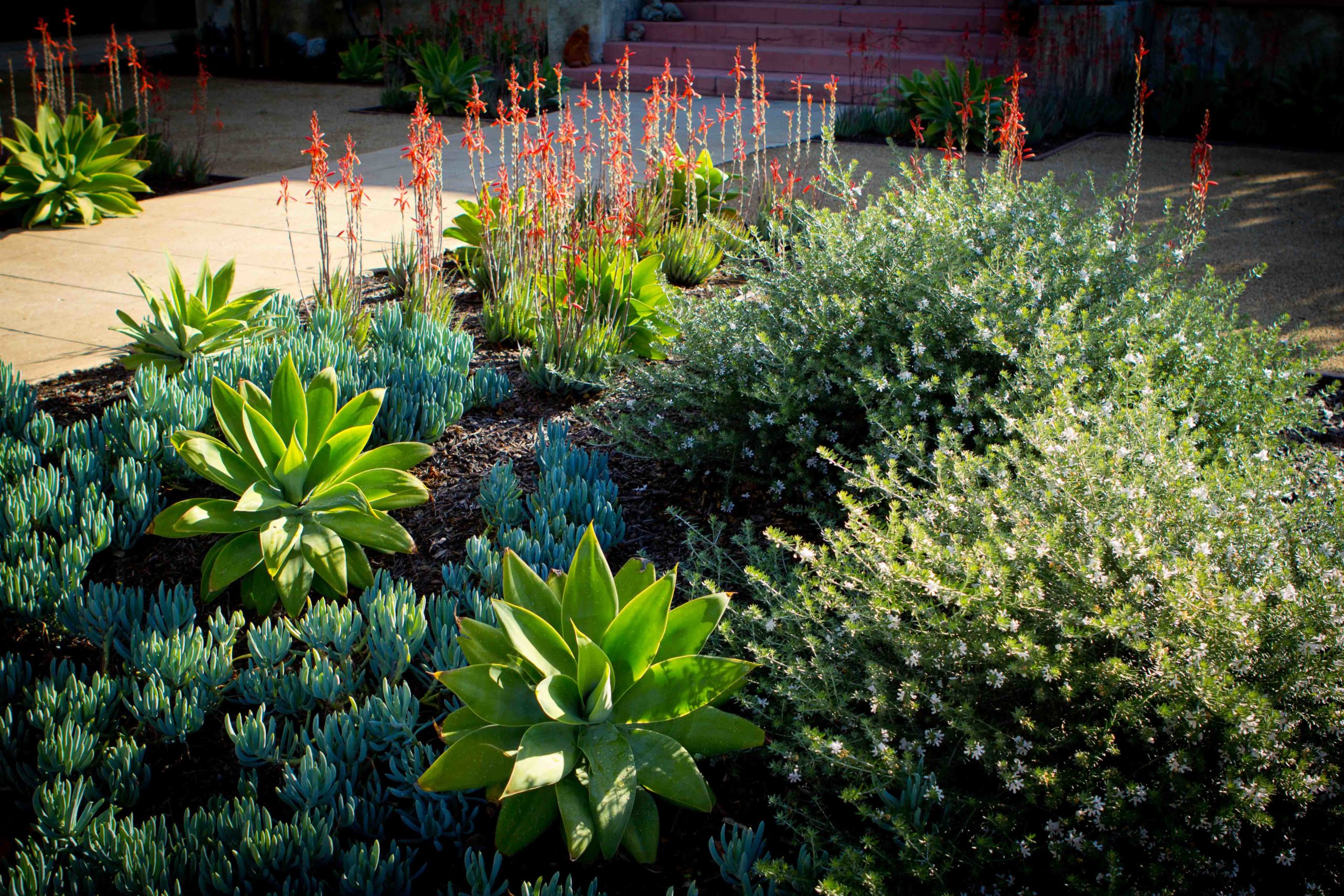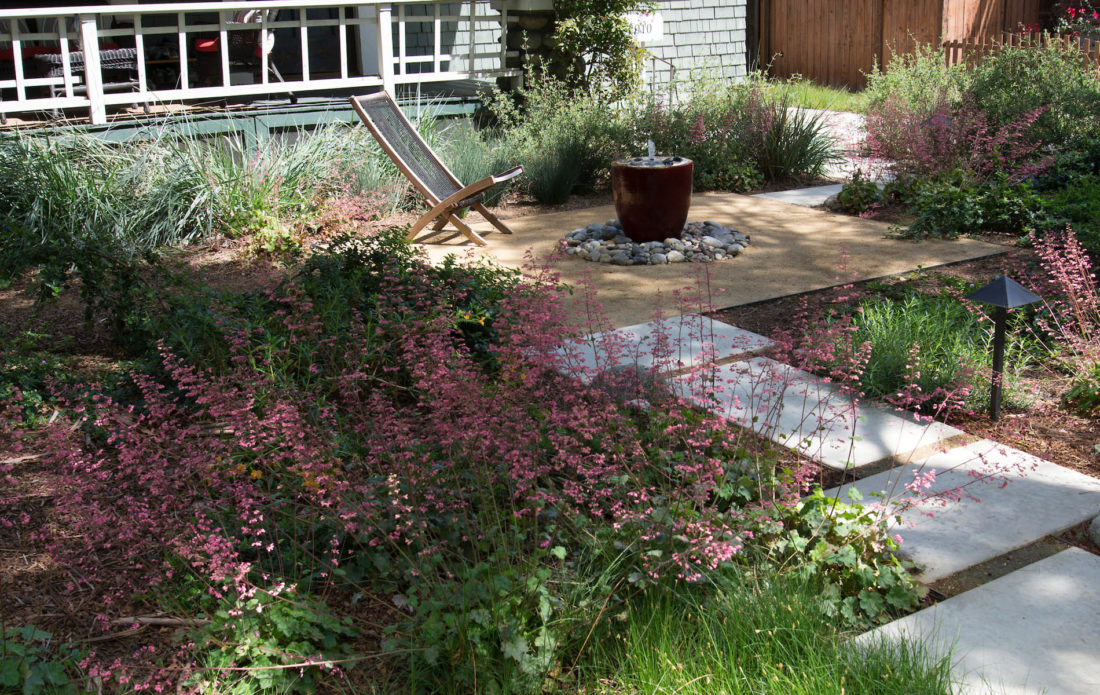We often have the pleasure of being invited back by clients to review the landscape we’ve designed, especially in the first few years. Usually on our visits, the plants are thriving, and all is well. We have designed your garden to be in harmony with our climate, using trees, shrubs, perennials and succulents either native to California and/or found within the Mediterranean climate zone. Once the plants are established, maintenance should be minimal.
The Early Years
Getting your garden off to a good start will help make it sustainable for the long term. While many of the plants we specify are drought tolerant, they will need supplemental irrigation at least during the first couple of years, often longer. Drought tolerant does not mean that once planted, plants can be forgotten.

Water your new drought tolerant garden every 3 days for the first month after planting. Let the ground dry out a bit between waterings. After a month, switch to irrigating 1-2 times per week and continue this schedule through the first spring and summer. You can also mist the plants with water occasionally to wash dust from the leaves.
After the second summer or third summer (depending on the amount of rain received during the wet season), most natives or other low-water plants will be fully established. Those natives that are fully drought tolerant will no longer need supplemental irrigation except during dry winters. However, we find that most plants, including natives, succulents, and other low-water plants look best with some supplemental irrigation. Be vigilant in pulling weeds, especially when your plants are young. Weeds compete for both water and nutrients in the soil.
One of the most frequent maintenance issues I notice on my visits are trees that have been left staked too long. Most young trees should have their stakes removed after 1-2 years. Neglecting this can risk stake ties girdling a trunk, or compromising the development of a sturdy trunk. To test to see if a stake is due to be removed, move the trunk of the tree and watch for movement of the root ball. No movement means you no longer need the stake.

Ongoing Care
Ongoing Care
As your garden matures, you will settle into seasonal maintenance which might look like:
Spring
Early spring is a good time to address irrigation system maintenance, before the heat of summer hits. Sprinklers should be checked frequently since they are above ground and can easily get damaged or misdirected. Replace spray heads if necessary, and clear any obstructions that block sprinkler spray. Adjust sprinkler heads so they don’t spray walls, driveways, or sidewalks.
For conventional drip irrigation, turn on the system to allow enough time for emitter wetting patterns to show. Check from the valve to the end of the irrigation line for leaks or clogged emitters. In-ground drip irrigation should have dripperlines flushed once a month, particularly in spring. Now is the time to hand weed if necessary, to apply a generous mulch if needed (ahead of summer drought) and to deadhead spent flowers. For shrubs, you can pinch new growth to encourage more dense, full plants.
Summer
In our climate, the first hot summer days can come as a shock to both plants and humans. Spring has meant “growth” for the plants, and now they must switch to survival mode. My planting schemes tend to be on the fuller side — I like plants to cover the ground and provide shade for roots — but if there are bare spots, make sure they are mulched with bark chips or gravel.

Fall
Fall in a Mediterranean climate is sometimes referred to as a “second spring,” with many flowering shrubs experiencing another bloom cycle. It is also an ideal to time to plant and transplant to take advantage of winter rains. Weed as necessary and renew mulch.
Winter
Following the preliminary tidying of fall, winter cleanup can be a bit more serious. Early in winter (because new growth starts early in the year in our climate), cut back anything growing too densely. Growth in maturing gardens can be vigorous. Although you will not need to prune heavily, prune to remove dead leaves and branches or to correct the shape.
Getting in touch with your garden throughout the year is its own reward. We hope that caring for your low-water garden helps connect you to the sometimes subtle shift of seasons in our Mediterranean climate.



